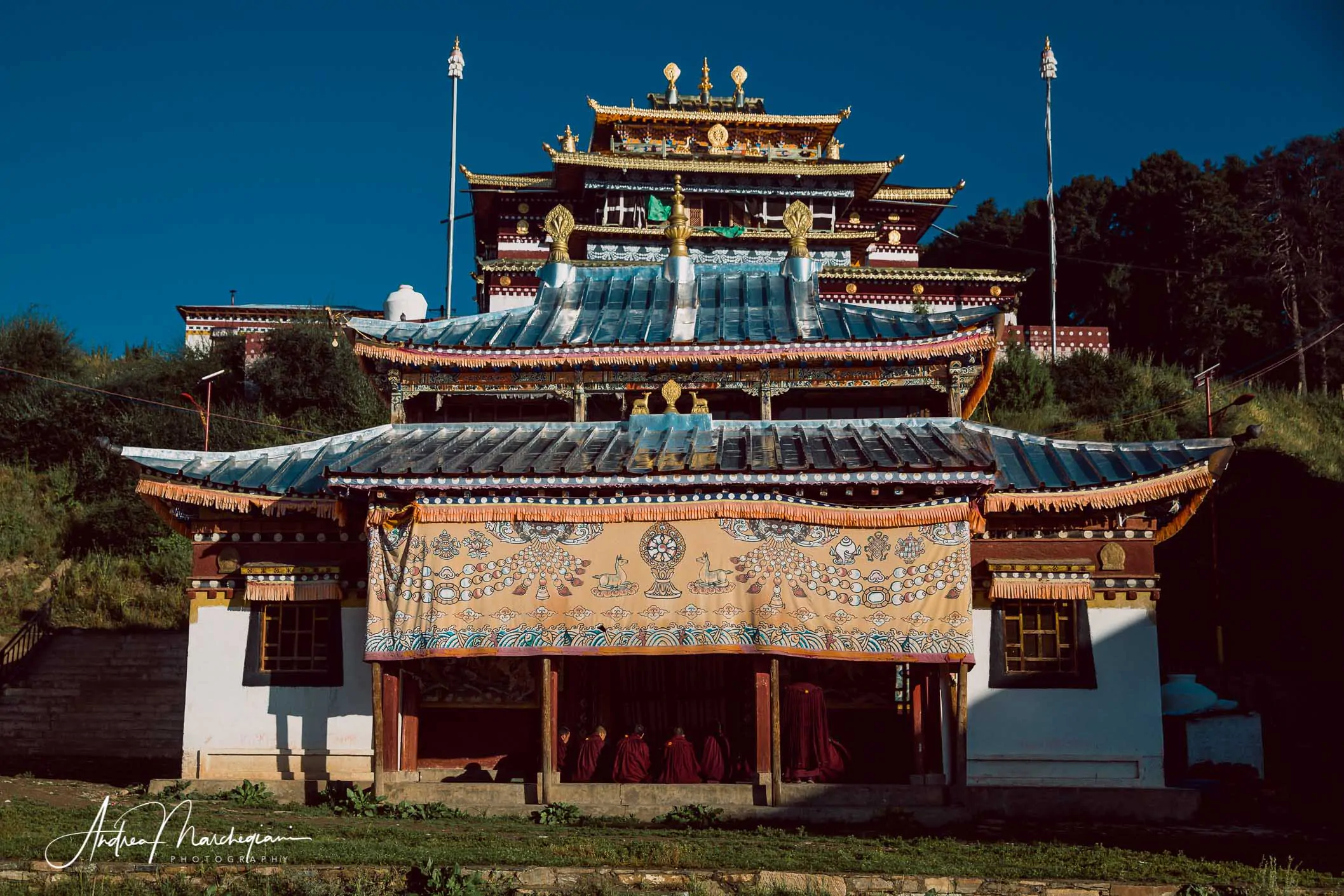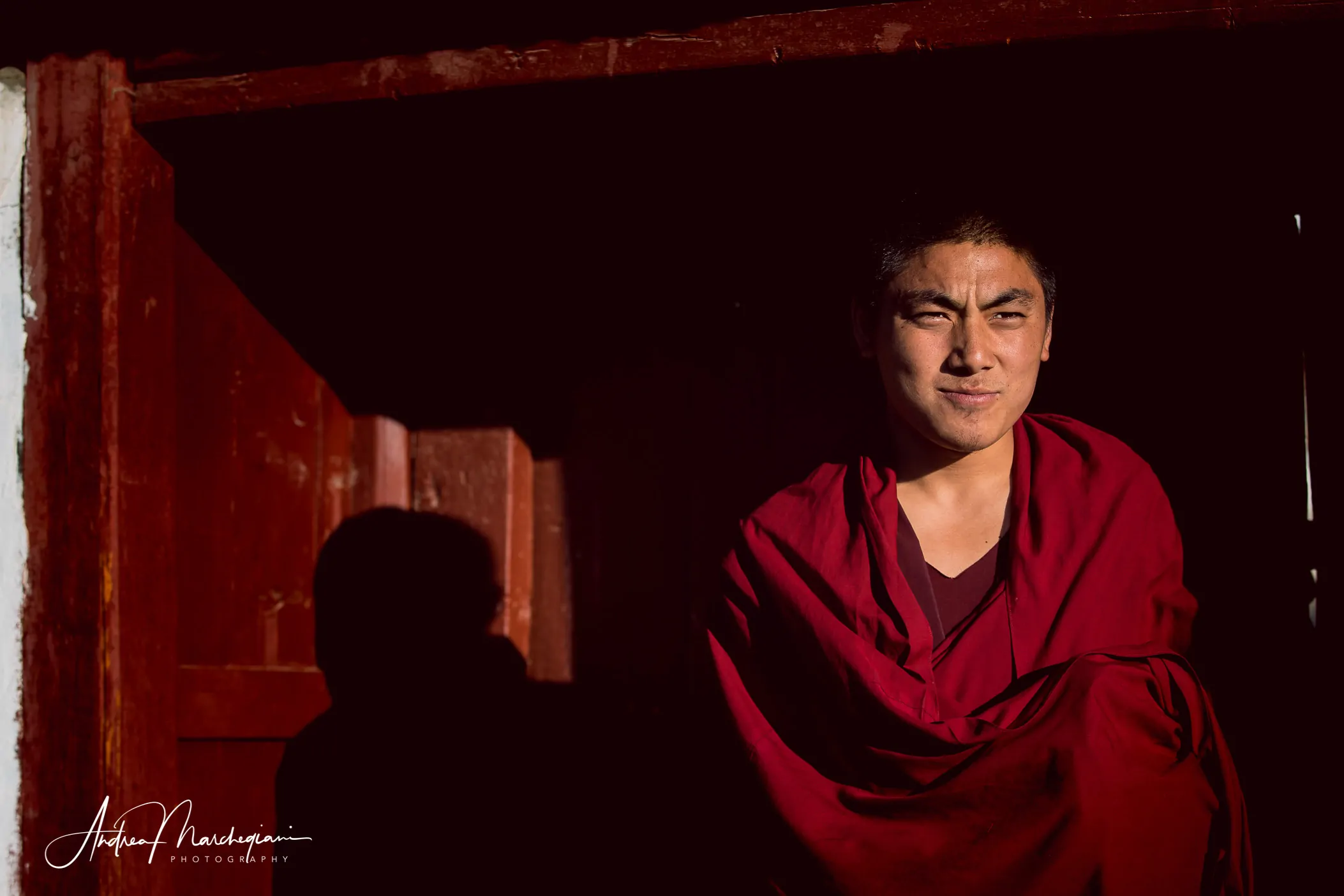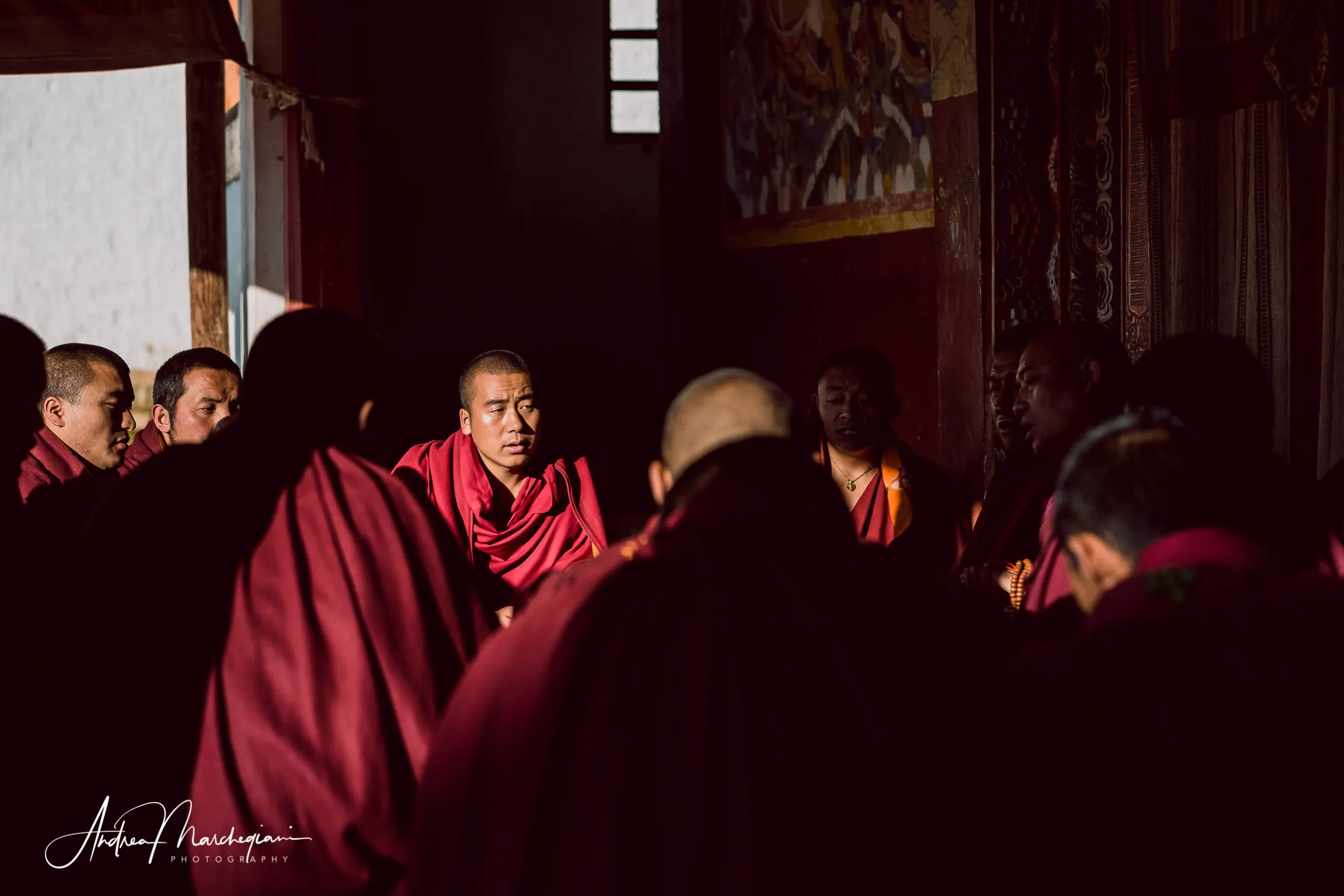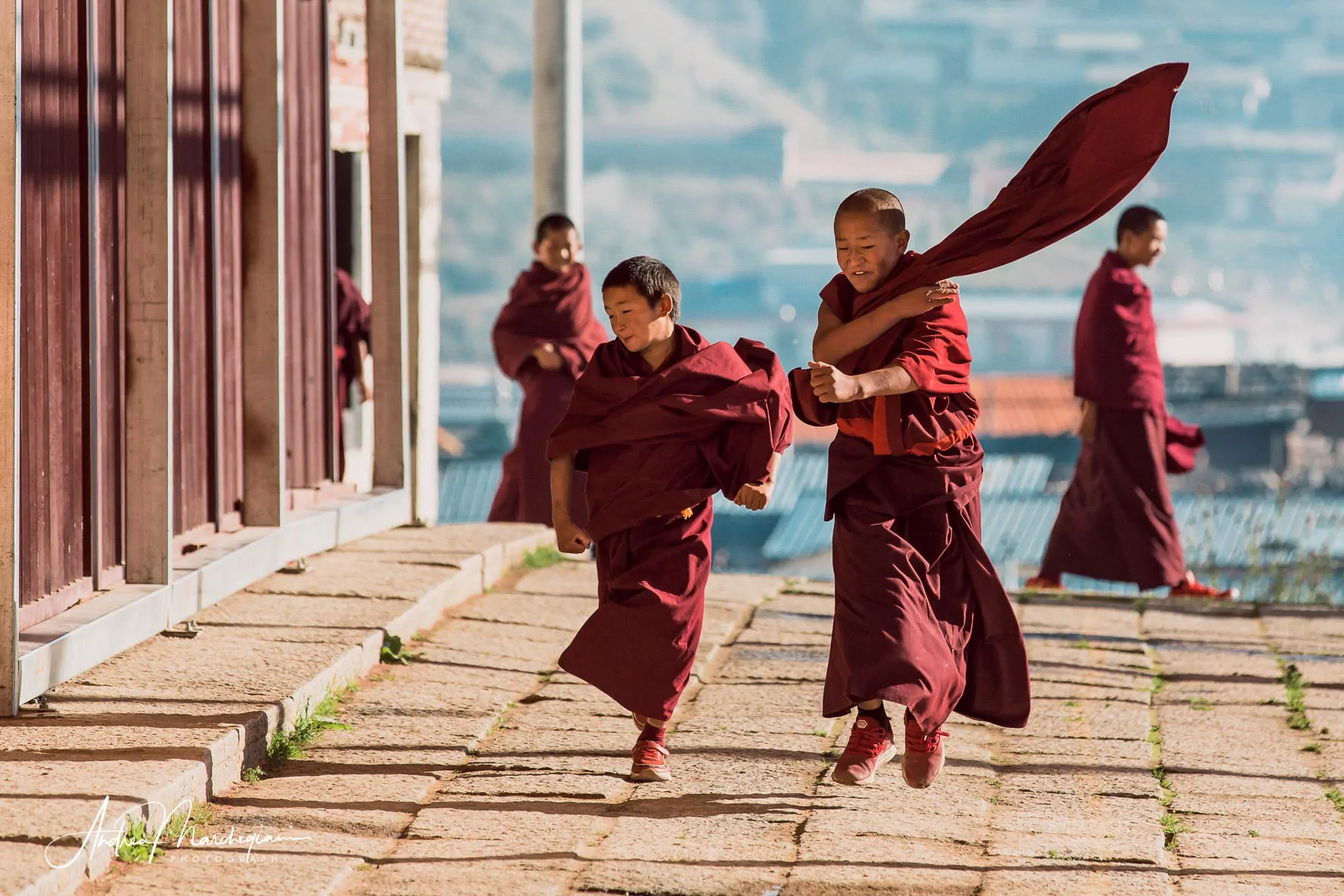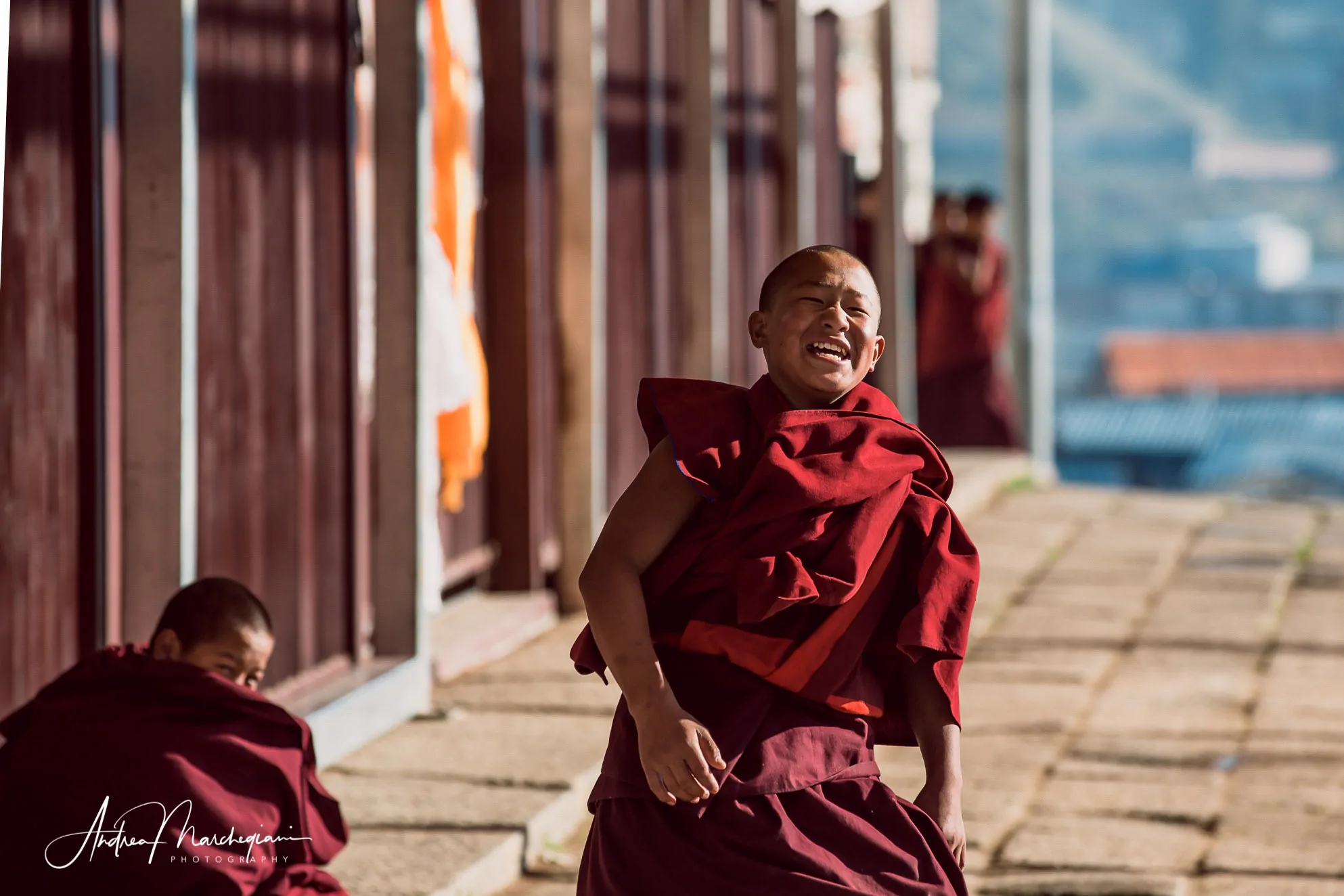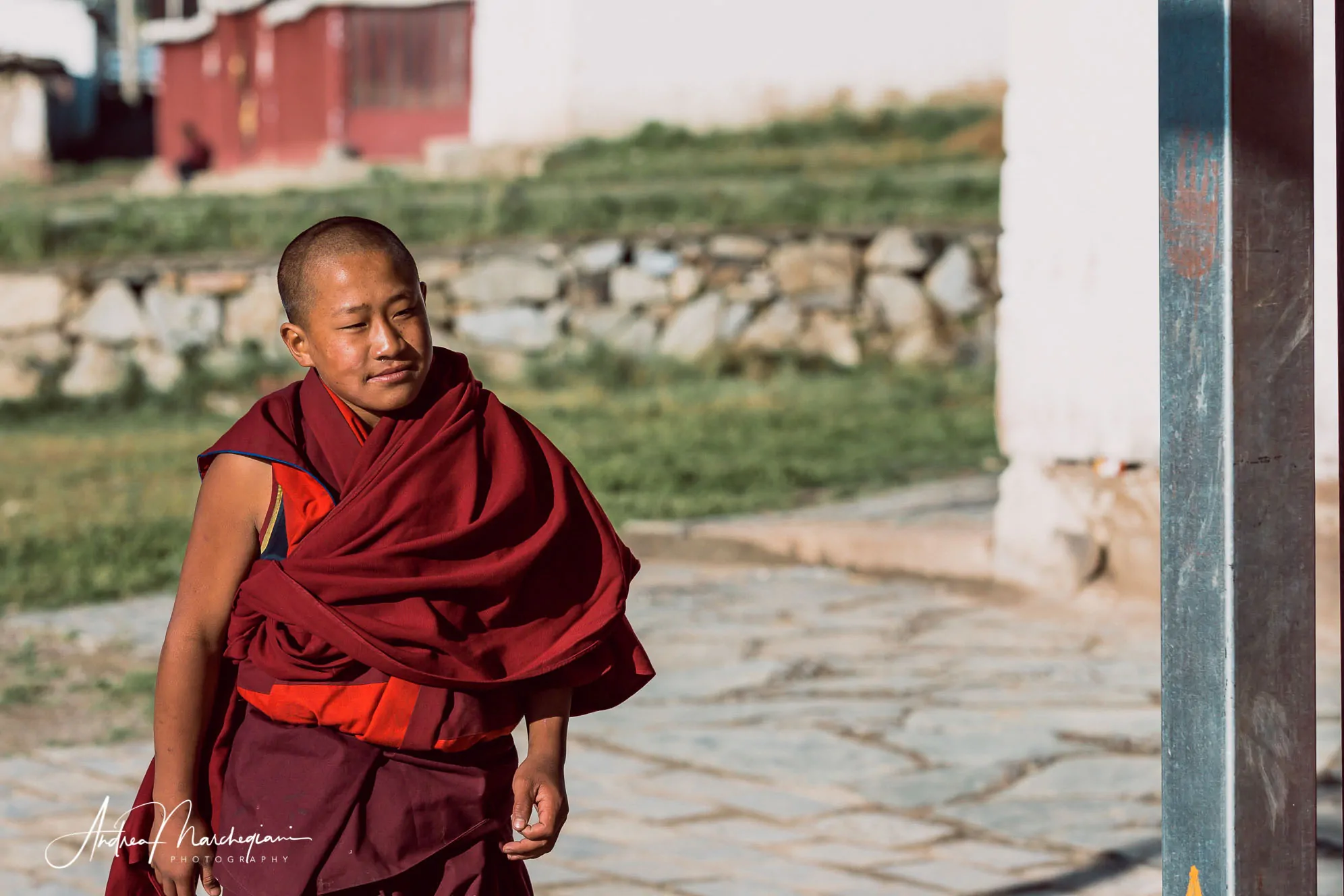We return to our hotel: a minibus is waiting for us. We greet this enchanted place, where life is game and prayer.
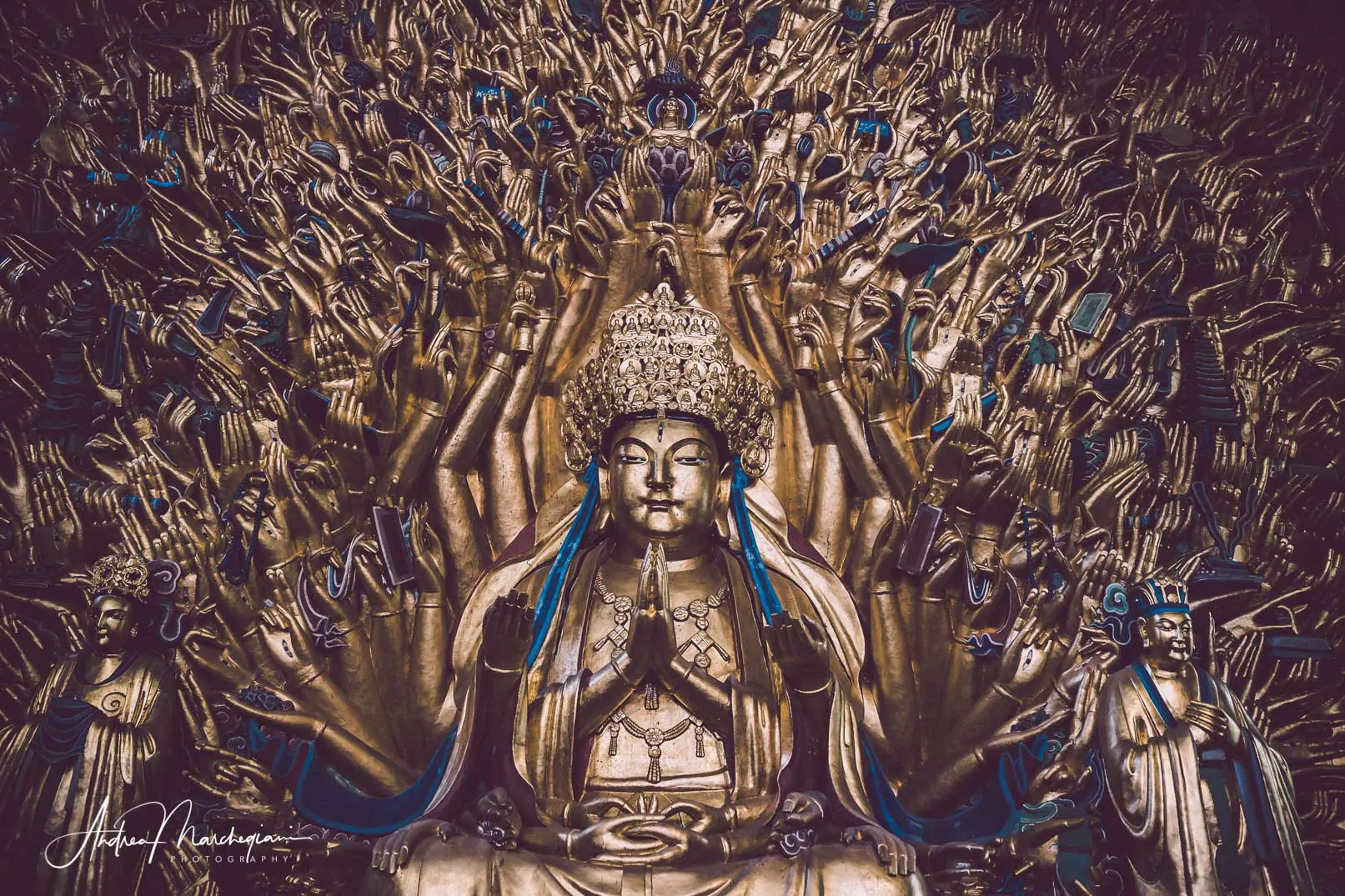
“Let us get up and be grateful, because if we have not learned much today, at least we have learned something, and if we have not learned something, at least we have not become ill, and if we have fallen ill, at least we have not died; therefore, let us all be grateful”.
– Buddha
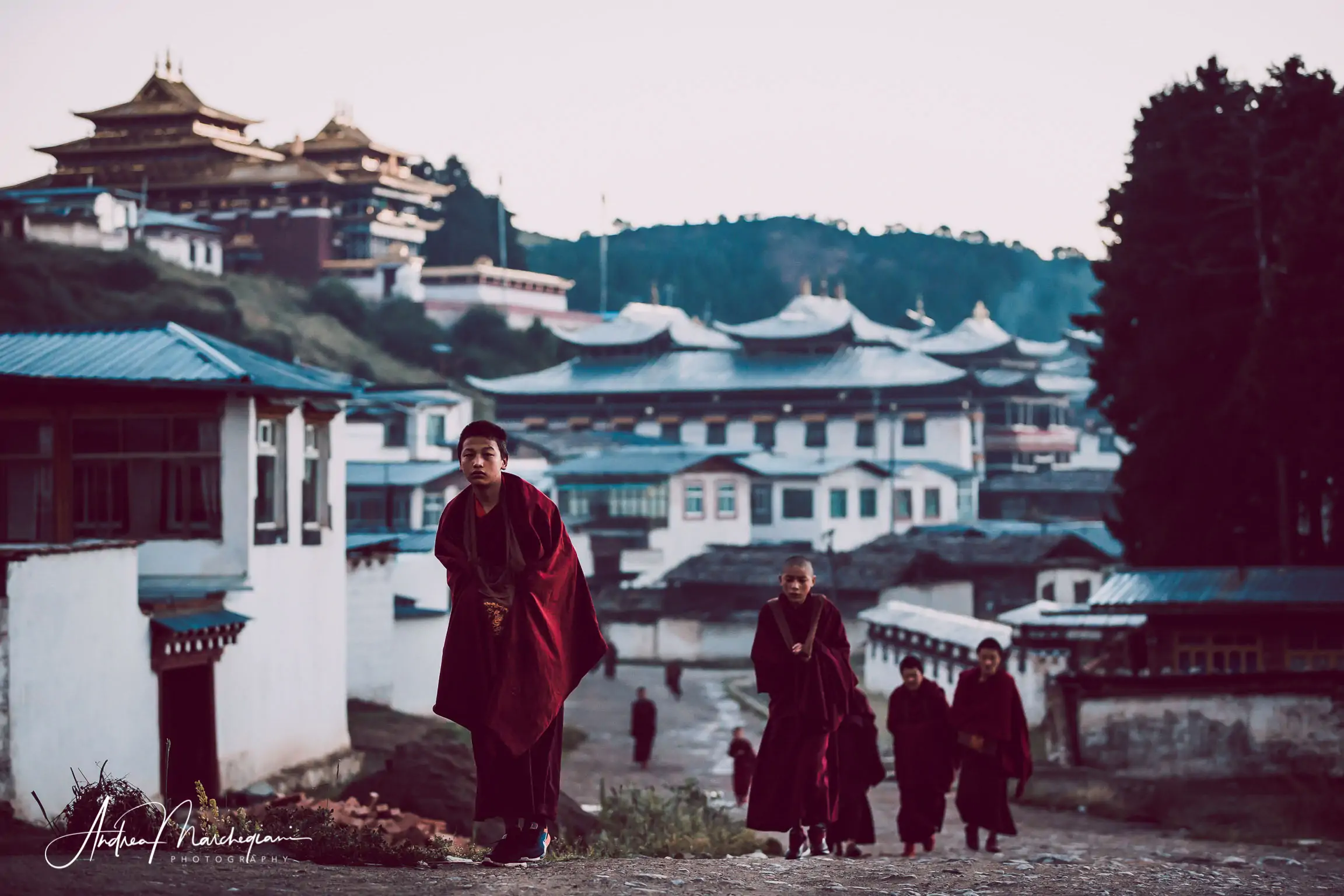
“What time do the monks get up in the morning?” we ask the guy at the hotel reception.
“In the morning, yes,” he says. “But what time?” we insist.
“Tomorrow, yes”.
As it often happens here in China, the question and the answer seek for each other but never meet. So we decide to get up very early and walk towards the temple, hoping for good luck.
In mountain areas, where the soil is rocky and often icy, monks do not bury the dead but offer them to vultures, who feed on them. The ceremony is called Celestial Burial and visitors are not allowed. Nevertheless, we fantasize about being able to attend. I go to sleep thinking about death: there is an extraordinary and dark beauty in the idea of delivering one’s corpse as a meal of life for other creatures.
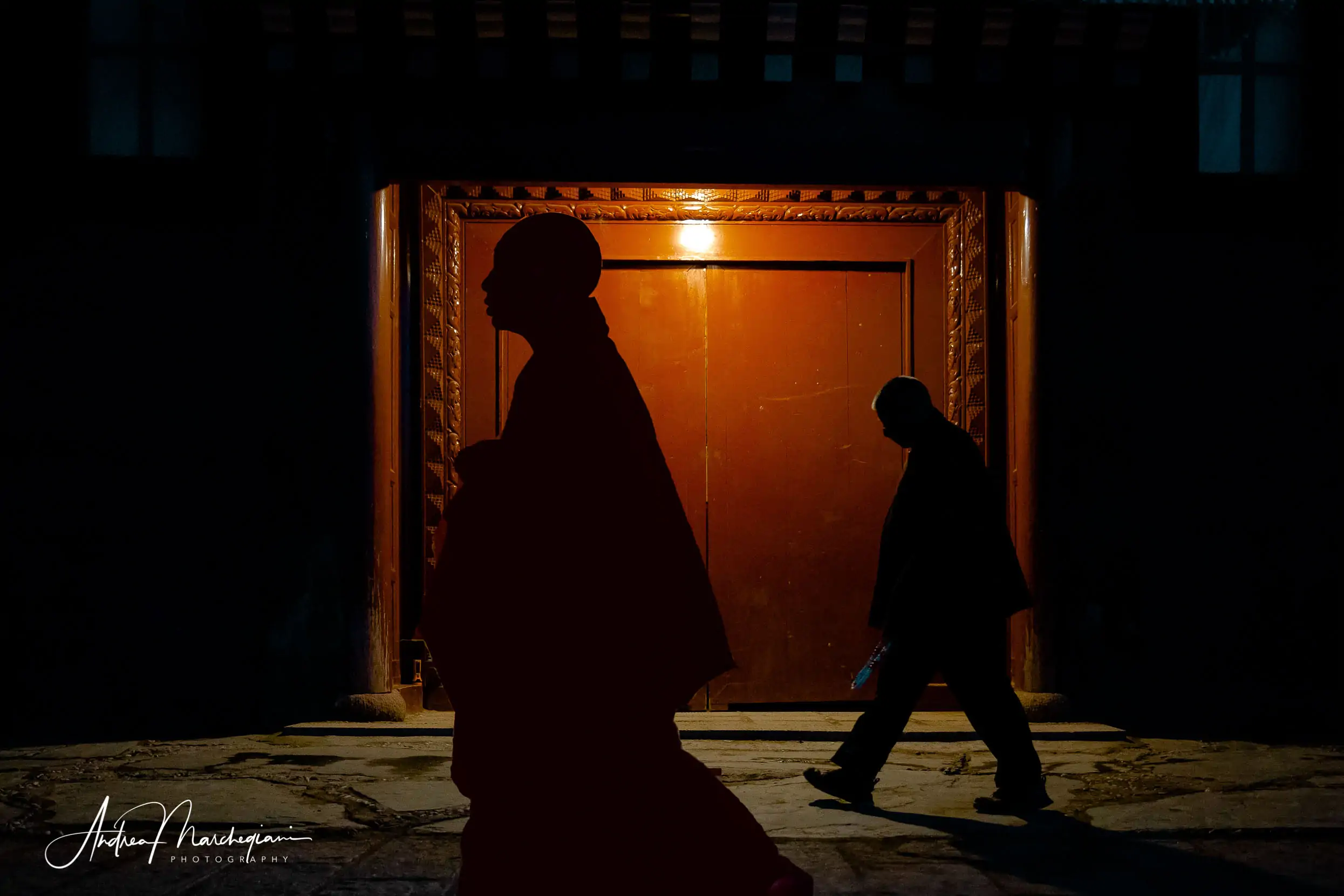
At 4.30 we are already in the street. The silence of the night wraps us but we are not alone. In groups of two or three, the monks go out of their houses and turn to the first alley. We decide to follow them. We observe them gathering in an illuminated building next to the monastery: they sit neatly and begin to meditate. Disturbed by our presence or perhaps only by the rigid temperature, they close the door and leave us outside, disappointed in the dark. We wait. After about ten minutes, a monk comes out and goes to a hut. He makes tea on the fire, then he goes back to the others and pours it to his companions. They close the door again.

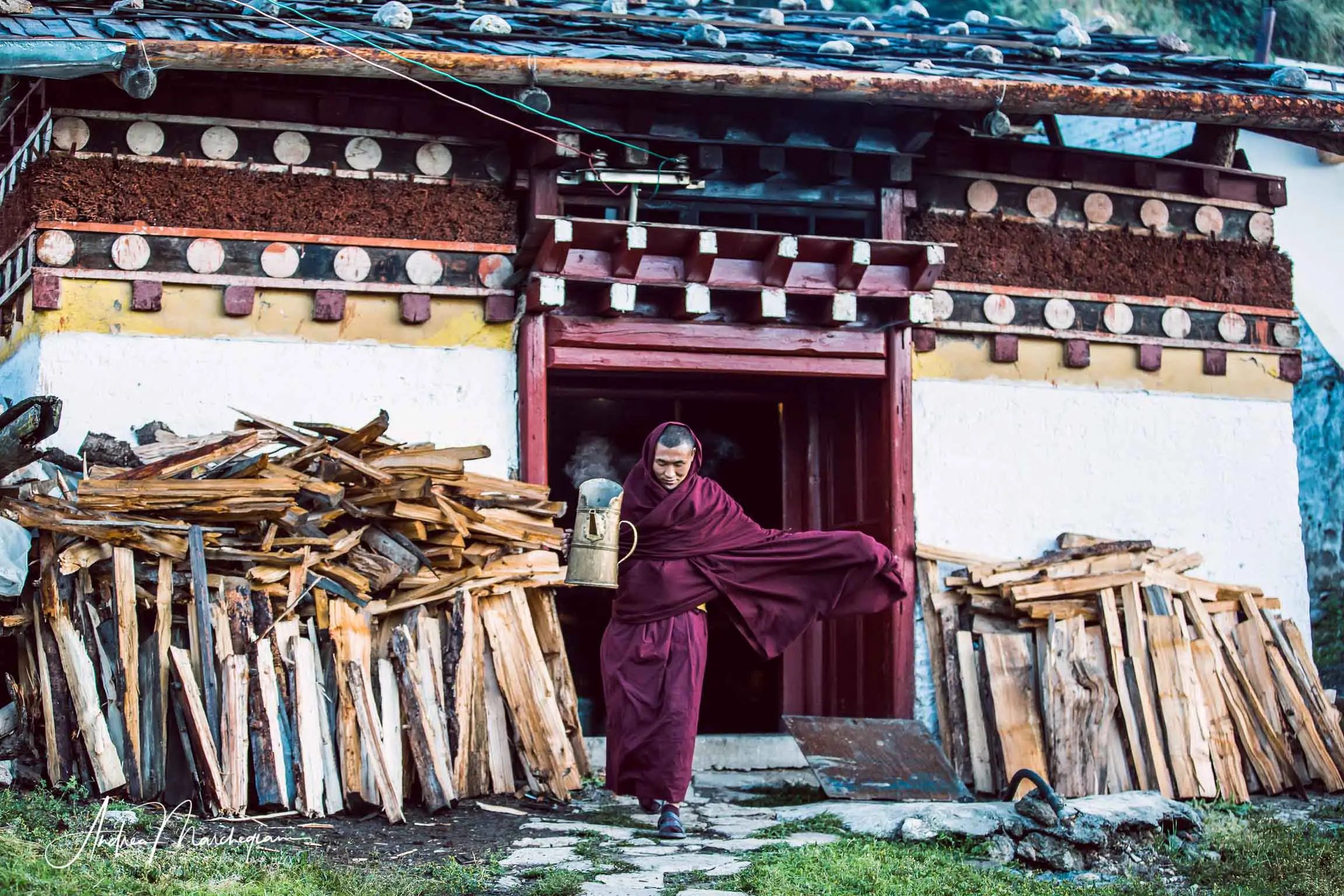
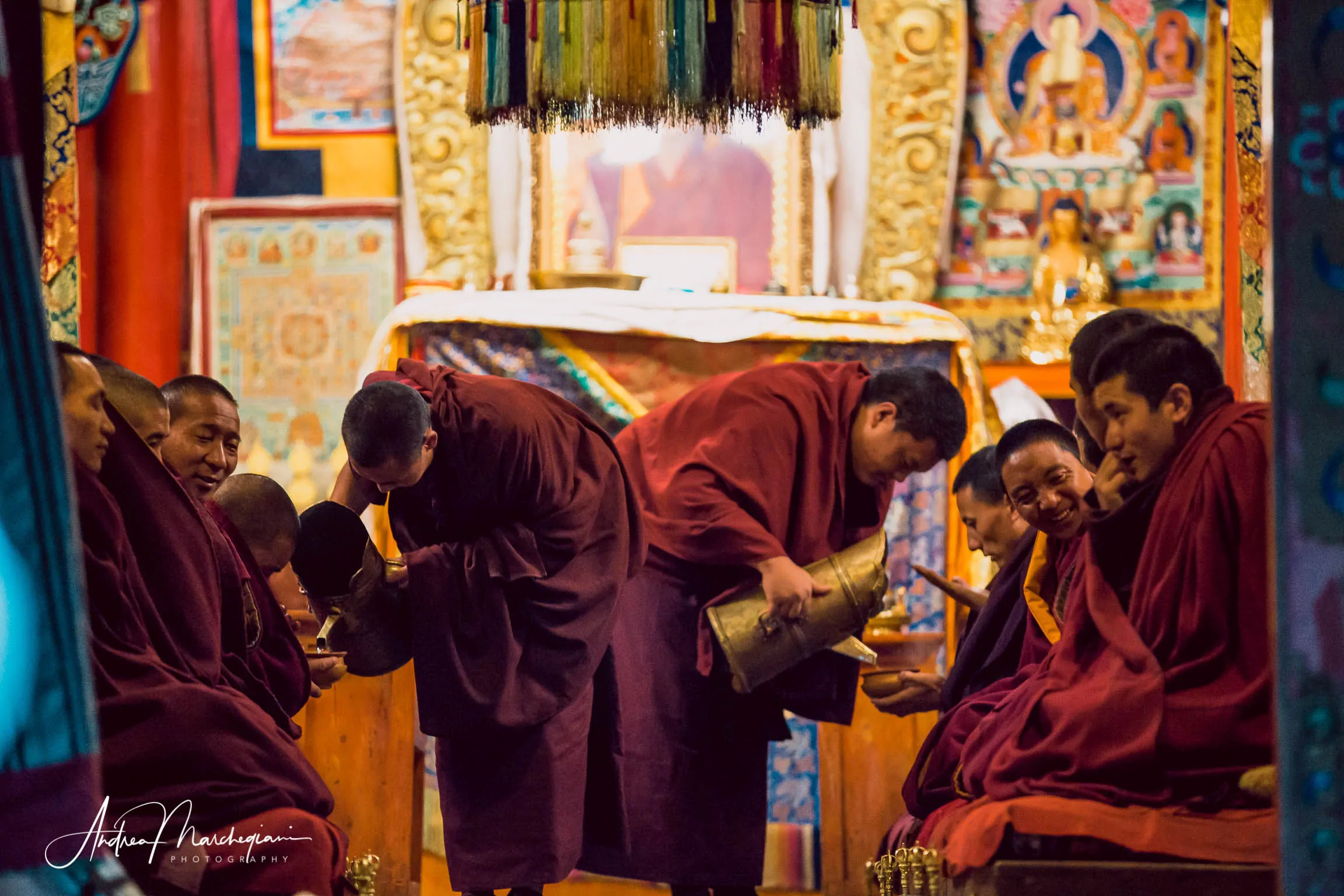
It is dawning and we decide to reach the temple. We immediately notice faithful of all ages walking around its walls: they are performing the “kora”, which is a form of meditation very common in Tibetan Buddhism. Buddhist walk around sacred sites or objects while meditating. Here in Langmusi, people walk around the temple and stop to kiss the temple door after each “revolution”.
We walk with them. Nobody pays attention to us, except a group of old people, sitting on a bench. They observe the others performing the kora and contribute by praying holding a small prayer wheel and an akshamala (Tibetan rosary).
Behind the building stands the school of the monks. On the wall, we find hundreds of pebbles and large seeds. We don’t understand what they’re for until we notice that, after every turn, people move one. They are improvised akshamala to keep track of the laps made.
All this effort and dedication is not meant to please any deity and ask for favors in return; meditations is in fact an act of pure will, a training in gratitude for what life has given us.
Being grateful and being kind are the cornerstones of Buddhism, along with understanding that human suffering is rooted in attachment. Happiness is a personal responsibility. And it is all connected with not harming others, because what goes around comes around in the wheel of Karma.
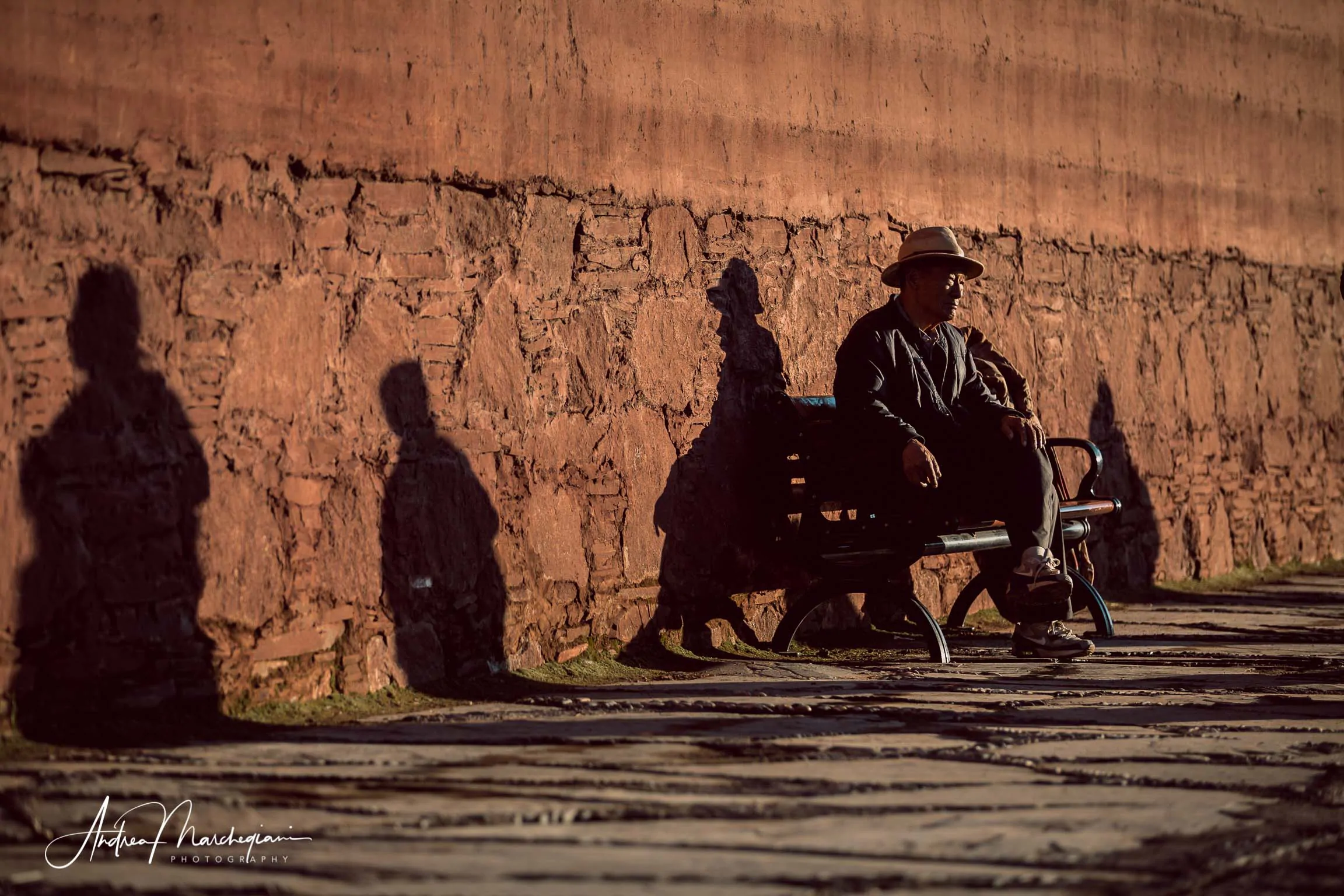
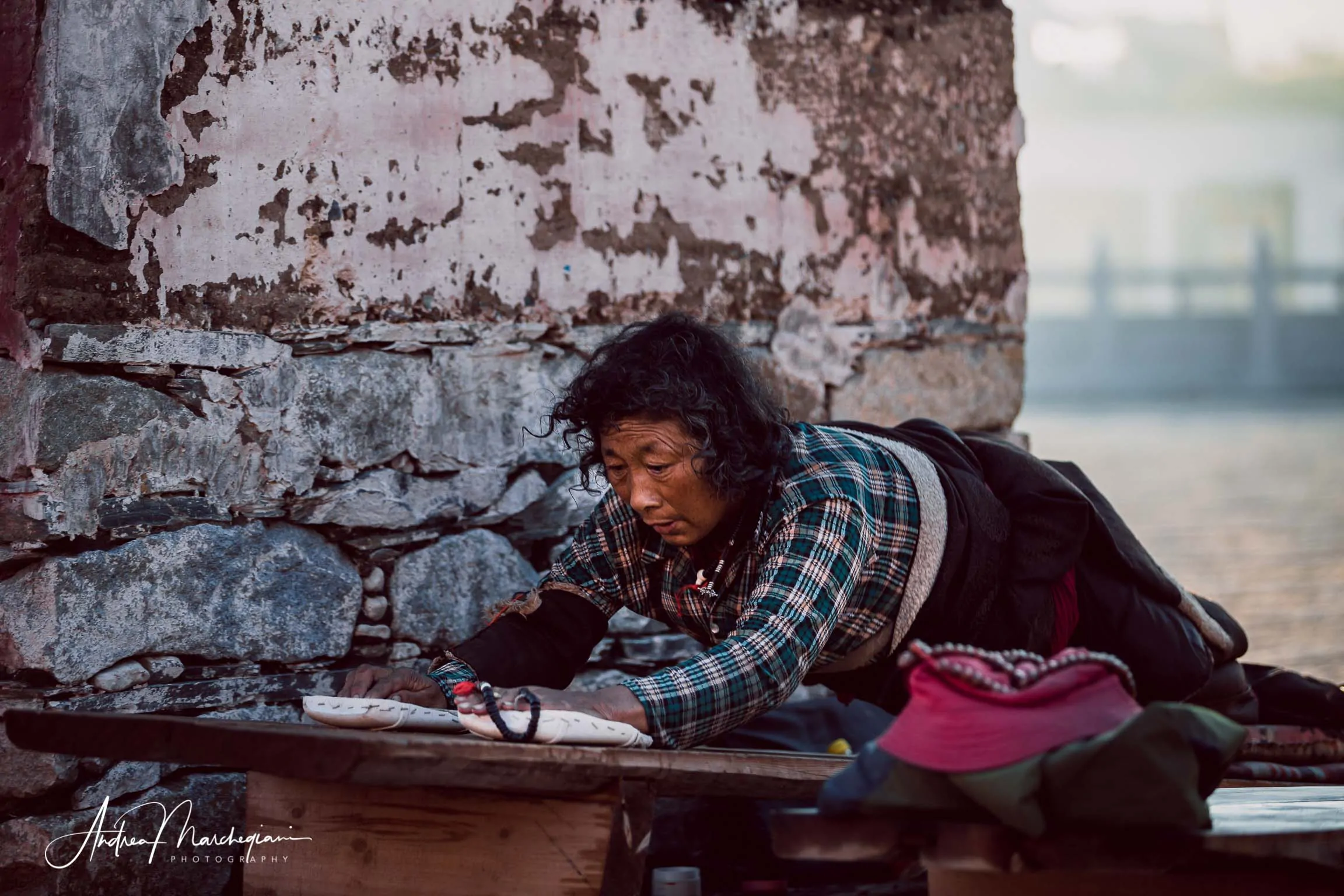
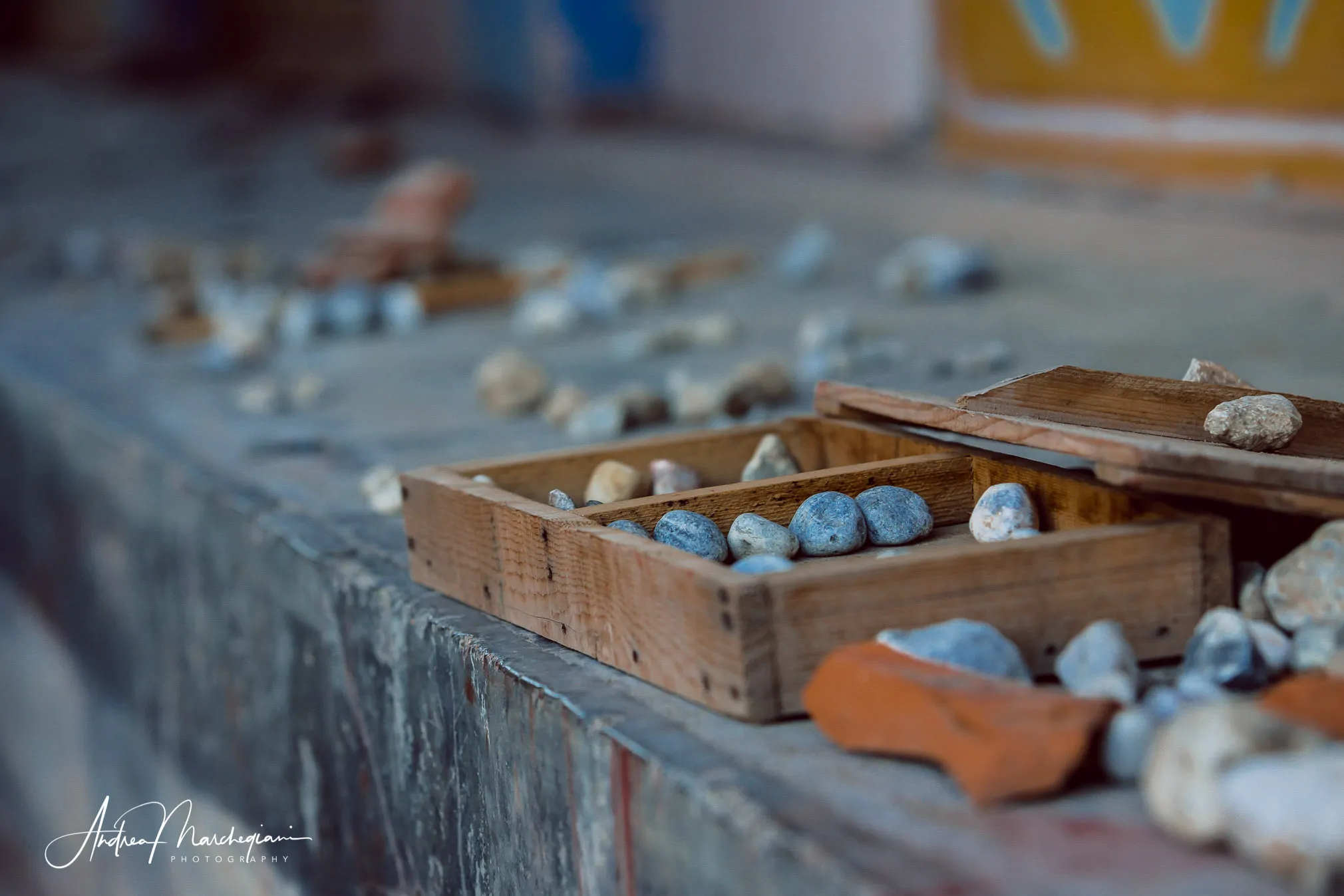
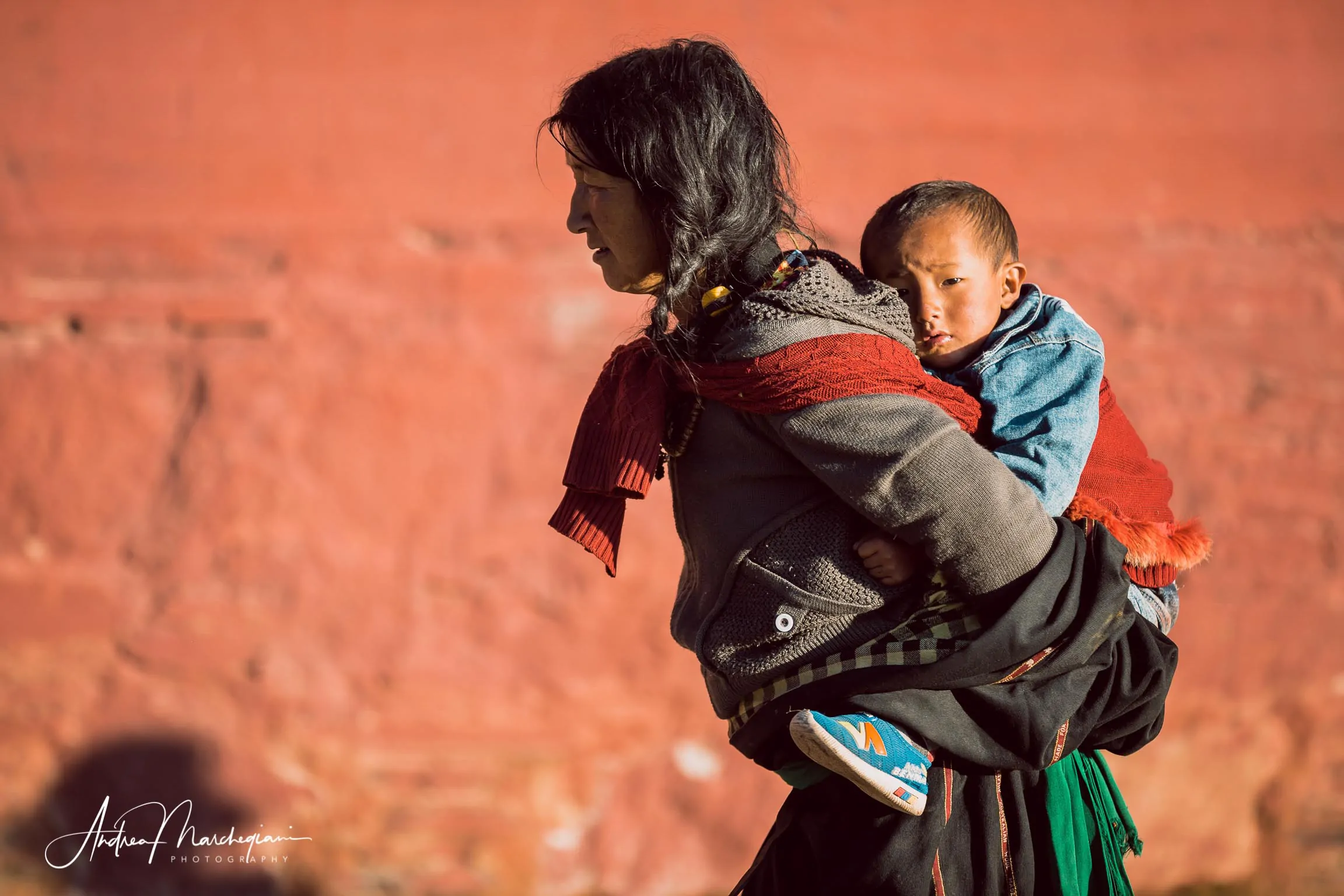
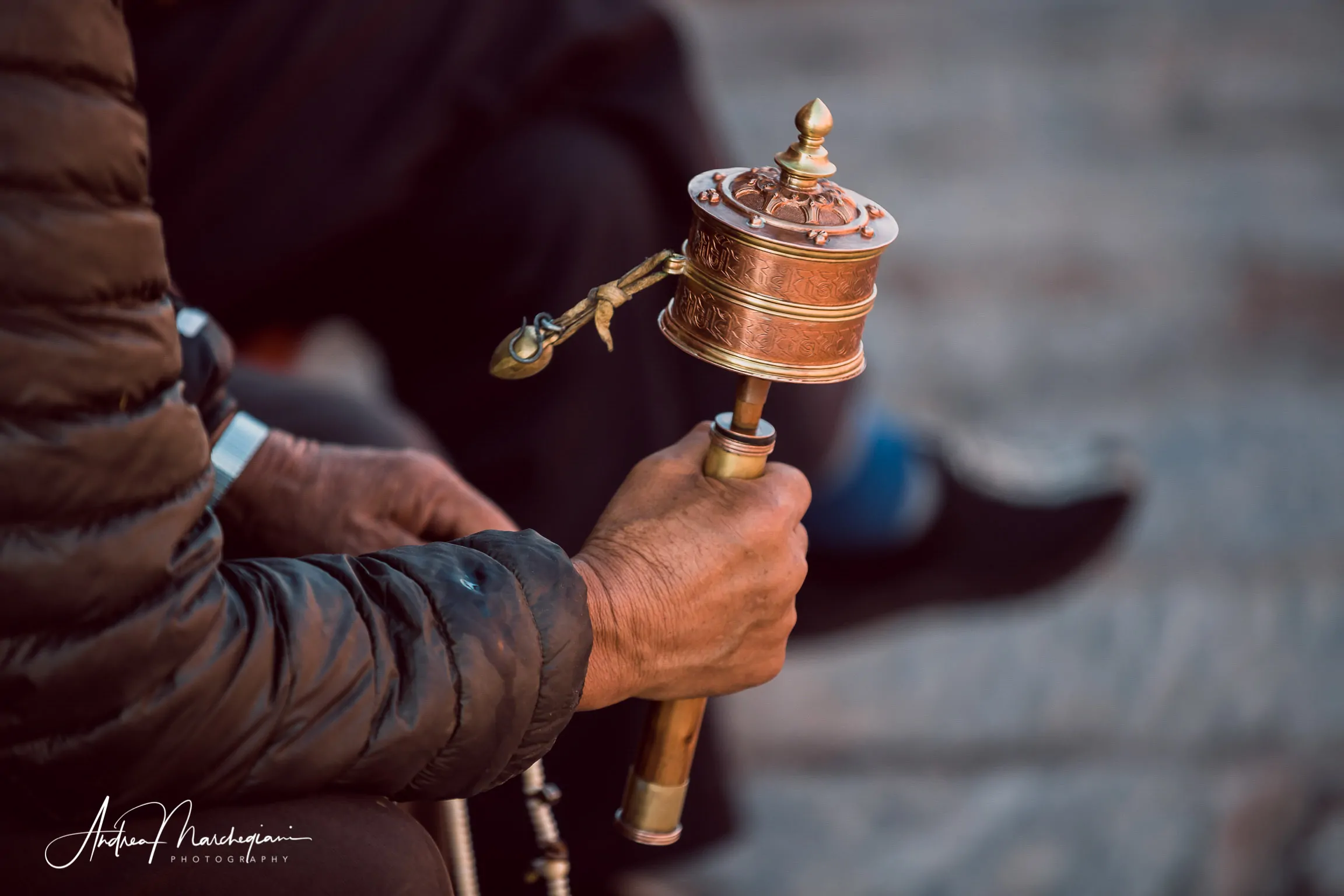
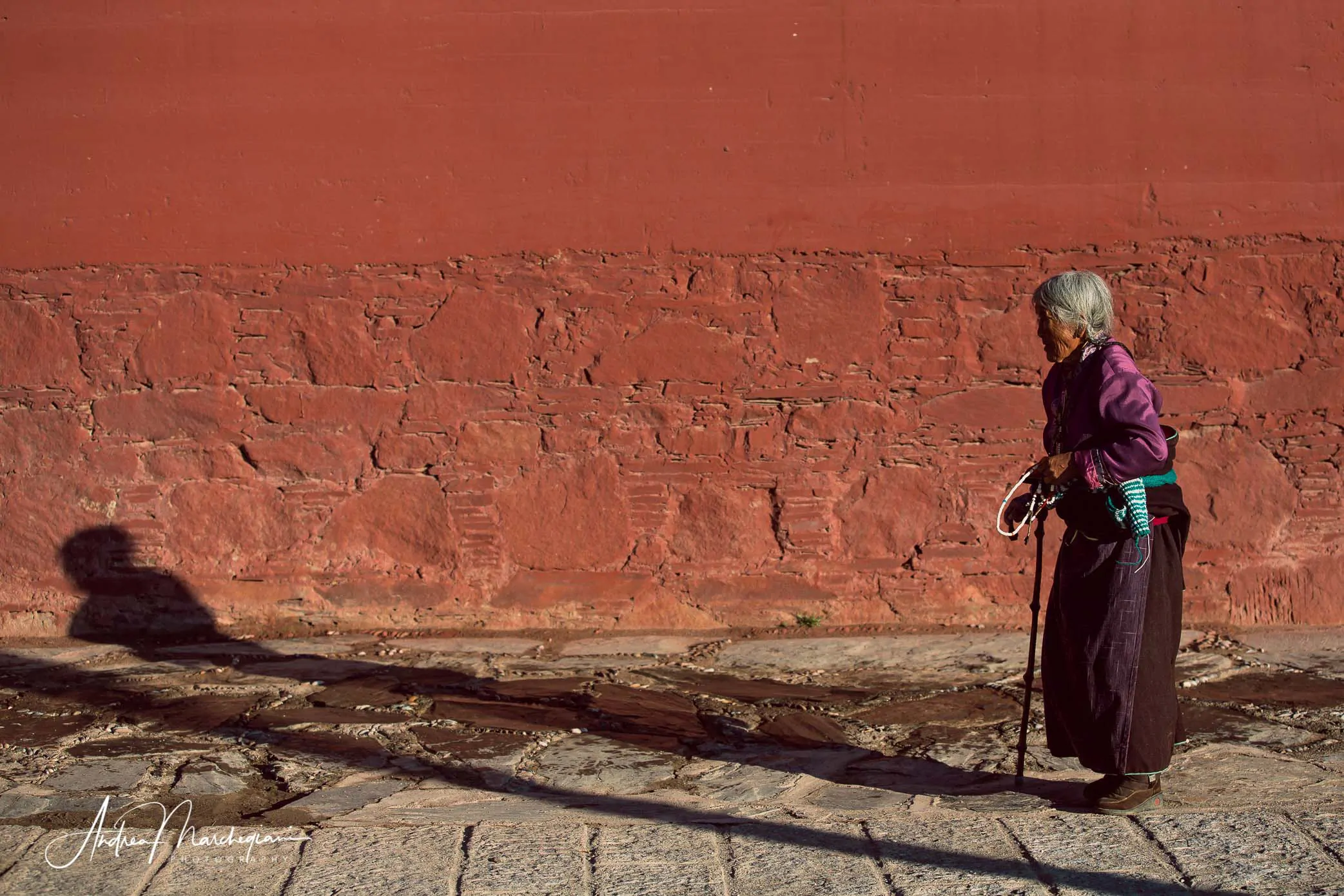
After filling our eyes and spirit with the kora, we move away from the temple. We hear a buzz in the distance: we get closer out of curiousity. A group of monks gathered under a porch and is reciting mantras. We stop to listen to their voices, and let them help empty our minds and bring peace to our hearts. What a privilege. At times like this, I think about my life and feel blessed.
